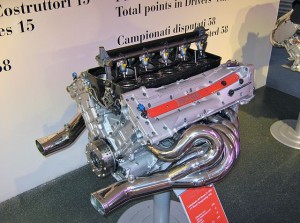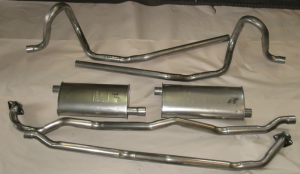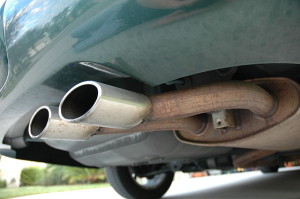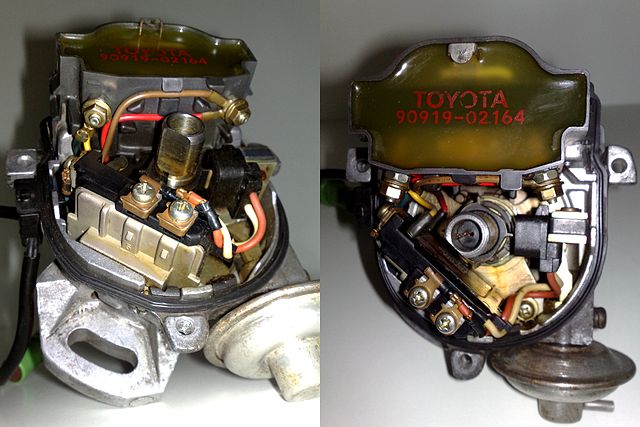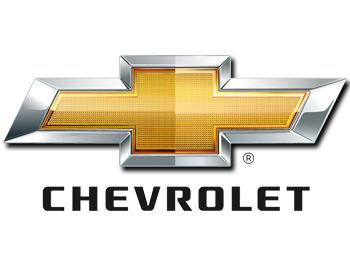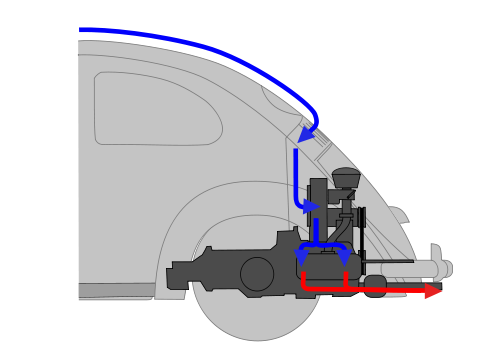What is an Exhaust System?
An automotive exhaust system consists of all of the pipes and other components that are designed to carry exhaust gasses away from the combustion chamber. The typical exhaust system begins with the exhaust valves and ports in a cylinder head and ends with a tail pipe attached to a muffler. In addition to simply carrying exhaust gasses, some of the components in an exhaust system can also perform other functions. In particular, some of these components are integral to emission control systems.
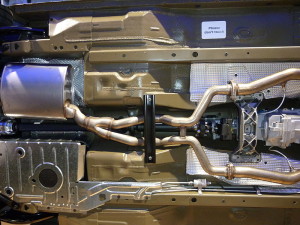
Exhaust systems consist of pipes and other components that safely route hot exhaust gasses underneath cars and trucks.
Contents [hide]
The Byproducts of Combustion
In addition to usable mechanical energy, the process of internal combustion also creates a lot of waste heat and various gasses. That means an automotive exhaust system has two main purposes:
- vent exhaust gasses safely outside the vehicle
- carry away the bulk of the waste heat produced by the engine
Heat carried in the exhaust stream represents nearly half of the total waste heat generated by an internal combustion engine, which means that an exhaust system is responsible for carrying away almost as much heat as the cooling system itself. If this heat remained in the engine compartment, the engine would run hotter, which would lead to reduced efficiency.
Additionally, some of the exhaust gasses produced during combustion are hazardous. One of the main byproducts of the combustion of gasoline is carbon monoxide, which is poisonous at sufficient levels. Carbon monoxide bonds with your blood in the place of oxygen, which can suffocate you if too much of this gas accumulates in an enclosed area. Since the passenger compartments of cars and trucks are enclosed areas, exhaust systems performs an important safety function by routing exhaust gasses safely behind vehicles.
Characteristics of an Exhaust System
Since an exhaust system has to carry potentially hazardous exhaust gasses away from the driver and passengers of a vehicle, and it also has to handle a large amount of heat, there are a few characteristics that these systems need to have.
- The system must be sealed to prevent the escape of exhaust gasses
- The pipes must be heat resistant to a high degree
- The pipes cannot be routed close to anything flammable
- The system must be tuned (performance engines only)
Most of these characteristics are primarily related to safety. For instance, an exhaust system that is not sealed (i.e. some components are rusted out) poses a potential health hazard to anyone in the passenger compartment of the vehicle. On a similar note, exhaust pipes and components that are improperly routed can damage components by overheating them or even cause fires.
The concept of “tuned exhaust” is also important, but it is related to efficient engine operation rather than safety. This characteristic is primarily found in performance vehicles that use specially designed exhaust headers.
Components of an Exhaust System
Exhaust systems consist of everything in between the tail pipe and the exhaust valves. A typical system consists of:
- Cylinder head components (exhaust valves and ports)
- Exhaust manifold
- Catalytic converter
- Pipes
- Muffler
The cylinder head is where the exhaust gasses are created as a byproduct of combustion, and the valves are instrumental in the proper operation of an engine, while the exhaust manifold connects the engine to the rest of the exhaust system. The catalytic converter is an emission control component, the muffler reduces the overall noise generated by the system, and the pipes serve to connect everything.
In turbocharged vehicles, a turbocharger is also built into the exhaust system. Turbochargers essentially use the flow of the exhaust to drive a turbine that helps an engine generate more power by forcing more air through its intake system.
The Flow of an Exhaust System
In a typical exhaust system, the exhaust stream begins to flow when the exhaust valves open. These valves are located inside the engine, and they open up during the exhaust stroke. This allows the exhaust gasses to vent through ports that are specifically designed for that purpose. From there, the exhaust passes into an exhaust manifold that is bolted to the engine. These manifolds typically have separate openings for each cylinder, and they combine or channel the exhaust stream into a single outlet pipe.
After the exhaust manifold, the exhaust stream passes into a pipe or directly into a catalytic converter, which is an emission control component that alters the structure of certain pollutants. This altered exhaust stream then passes into additional pipes that eventually lead to the muffler. This is the final component, and its primary function is to reduce the overall noise of the system. To that end, mufflers typically contain a series of baffles that effectively silence the exhaust without excessive constriction on its flow.
Exhaust System Terminology
In addition to the basic exhaust system components, there are a number of other terms that refer to either a single component or a group of components.
Exhaust Header
Although the terms “header” and “manifold” are often used interchangeably, they do refer to slightly different components that perform the same function. An exhaust manifold is a stock component that connects an engine to the rest of an exhaust system. Headers are tuned components that perform that same function in a highly efficient way.
Cat-back
The term “cat-back” refers to the exhaust system components that are located behind the catalytic converter. That means replacing a “cat-back” system typically involves one or more pipes, a muffler, and a tailpipe. Aftermarket cat-back systems, often with glasspack mufflers and other performance options, are sometimes available.
Header-back
The term “header-back” refers to the exhaust system components that are located after the header. That means replacing the “header-back” involves replacing the pipes, catalytic converter, muffler, and everything but the header. In some cases, it is possible to purchase an aftermarket header-back exhaust system that is designed with performance in mind.
Exhaust System Failure
All of the component parts in an exhaust system can fail for any number of reasons. Some common causes of exhaust system failures include:
- Malfunctioning engine (i.e. raw fuel dumped into exhaust)
- Physical damage (i.e. bottoming out when driving)
- Rust (external or internal causes)
The most expensive component in most exhaust systems is the catalytic converter. Although these components are often designed to last the life of a vehicle, they can be fouled or damaged by the exhaust byproducts of an improperly-running engine. For instance, excessive raw fuel dumped into a catalytic converter may actually melt the substrate.
Physical damage is also a concern in many vehicles with low ground clearance. If the exhaust is struck by a road surface or other object, it can be dented, pinched, holed, or receive other damage. These components often need to be replaced.
The biggest culprit in exhaust system failures, however, is rust. This is an especially big issue in the back end of most exhaust systems. Since these components don’t get as hot as components further up in the system, they can accumulate moisture that doesn’t evaporate. This can lead to rust, which is the main reason that mufflers need to be replaced.
When the baffles in a muffler rust out, an exhaust system can become excessively loud. Rusted out pipes and components can also pose a health hazard due to the potential buildup of carbon monoxide in the passenger compartment. Additionally, a vehicle may fail emissions or smog testing if an excessive amount of the exhaust gasses escape from the system prior to reaching the tailpipe.

